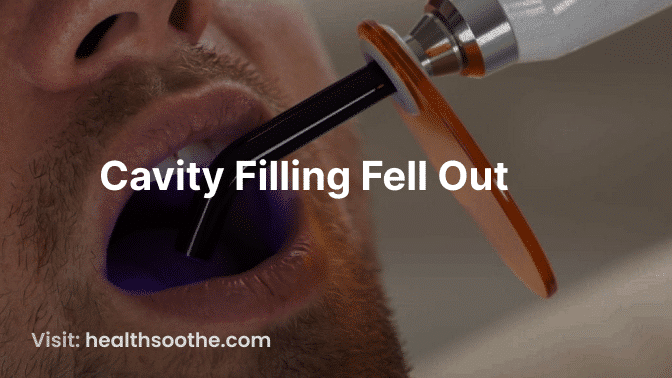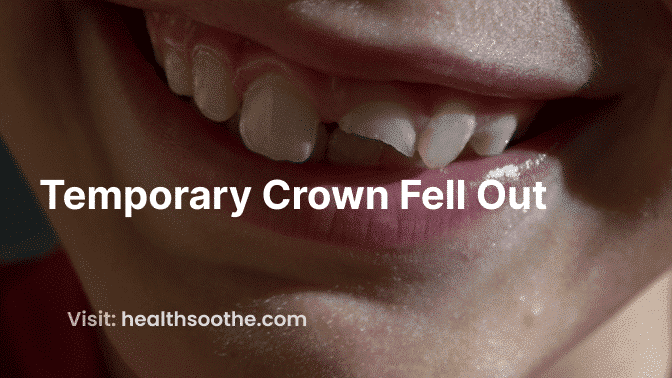Dealing with dental issues can be a source of stress and discomfort, and one common problem many people face is a cavity filling falling out.
In this article, we will explore the causes behind this issue, the signs and symptoms to watch out for, and the necessary steps to take when confronted with a missing filling.
Common Causes of Cavity Filling Falling Out:
- Decay and Tooth Damage: Tooth decay weakens the tooth structure surrounding the filling, compromising its stability and causing it to dislodge. Additionally, trauma or physical damage to the tooth, such as a chip or fracture, can contribute to filling failure.
- Wear and Tear: The constant pressure and friction from chewing and biting can gradually wear down the filling material over time. This wear and tear weaken the bond between the filling and the tooth, making it more susceptible to coming loose or falling out.
- Improper Filling Placement: If a filling is not placed correctly during the initial dental procedure, it may not adhere properly to the tooth structure. This improper placement can compromise the stability and longevity of the filling, leading to its eventual detachment.
- Biting or Chewing Habits: Habits like teeth grinding (bruxism) or biting on hard objects place excessive force on the filling, causing it to weaken or break away from the tooth. These habits can accelerate filling failure, especially if they persist over time.
It's important to note that the longevity of a filling can also depend on factors such as the type of filling material used, the size and location of the cavity, and individual oral hygiene practices. Regular dental check-ups can help detect any issues with fillings and address them promptly.
Signs and Symptoms:
- Sensitivity: When a filling falls out, the exposed tooth structure may become sensitive to hot, cold, or sweet stimuli.
- Pain or Discomfort: The loss of a filling can result in varying degrees of pain or discomfort, especially when chewing or biting down.
- Visible Void: A visible hole or gap in the tooth may be noticeable after the filling comes out, indicating the need for immediate attention.
What to Do When a Cavity Filling Falls Out:
- Retrieve the Filling (if possible): If you notice that your filling has fallen out, try to locate and keep it. Your dentist may be able to assess it and determine if it can be reattached or if a new filling is required.
- Rinse Your Mouth: Gently rinse your mouth with warm water to remove any debris or food particles that may be present around the area of the missing filling.
- Avoid Chewing on the Affected Side: To prevent further damage or discomfort, try to avoid chewing or biting down on the side of the mouth where the filling fell out. This reduces the risk of causing additional harm to the exposed tooth.
- Use Temporary Measures: Until you can visit your dentist, you can employ some temporary measures to protect the exposed area and alleviate any sensitivity or discomfort:
- Schedule an Appointment with Your Dentist: It's essential to contact your dentist as soon as possible to schedule an appointment. Inform them about the situation and any symptoms you may be experiencing. The dentist will evaluate the tooth, recommend appropriate treatment, and provide long-term solutions to address the issue.
Read Also: Understanding the Various Types of Personal Injury Cases Handled by Chicago Law Firms
Potential Treatment Options:
- Refilling the Cavity: If the tooth structure is still intact and there is no significant damage, your dentist may recommend refilling the cavity with a new dental filling. They will remove any remaining debris or decayed material, clean the area, and place a new filling to restore the tooth's function and appearance.
- Dental Crown: In cases where the tooth structure is extensively damaged or weakened, your dentist may suggest a dental crown. A dental crown is a cap-like restoration that covers the entire tooth, providing protection and support. The tooth will be reshaped to accommodate the crown, and a custom-made crown will be placed over it to restore its strength and aesthetics.
- Inlay or Onlay: If the damage to the tooth is too significant for a regular filling but not extensive enough to warrant a dental crown, your dentist may recommend an inlay or onlay. These are custom-made restorations that are used to repair larger cavities or damaged areas of the tooth. An inlay fits within the cusps of the tooth, while an onlay covers one or more cusps.
- Root Canal Treatment: If the filling falling out has exposed the tooth's pulp (the inner part of the tooth containing nerves and blood vessels) and caused infection or inflammation, a root canal treatment may be necessary. During a root canal, the infected or damaged pulp is removed, the canals are cleaned and sealed, and a dental crown is usually placed to protect and strengthen the treated tooth.
- Tooth Extraction and Replacement: In severe cases where the tooth cannot be saved, your dentist may recommend extracting the tooth. After the extraction, replacement options such as dental implants, bridges, or dentures can be considered to restore function and aesthetics.
The specific treatment option will depend on various factors, including the extent of tooth damage, the location of the cavity, and your dentist's professional judgment.
Preventive Measures:
- Good Oral Hygiene: Maintaining proper oral hygiene practices, including brushing twice a day, flossing daily, and using an antimicrobial mouthwash, helps prevent decay and prolongs the life of dental fillings.
- Avoiding Bad Habits: Steer clear of habits such as teeth grinding or biting on hard objects, as they can lead to filling failure.
- Regular Dental Visits: Scheduling regular dental check-ups allows your dentist to identify any potential filling issues early on and address them before they escalate.
Conclusion
Experiencing a cavity filling falling out can be alarming, but with the right knowledge and prompt action, you can restore your dental health. Remember to contact your dentist immediately, take temporary measures to protect the exposed area, and follow the recommended treatment options.
By practising good oral hygiene and avoiding detrimental habits, you can minimize the risk of future filling failures. Regular dental visits are crucial for maintaining a healthy smile and preventing dental issues. Stay proactive and prioritize your oral health for a brighter, cavity-free future.
FAQ 1: Q: What should I do if my cavity filling fell out?
A: If your cavity filling has fallen out, it is important to contact your dentist as soon as possible. They will be able to assess the situation and determine the best course of action to address the issue.
FAQ 2: Q: Can I temporarily fix my cavity filling that fell out at home?
A: While it may be tempting to try and fix a fallen-out cavity filling at home, it is not recommended. DIY solutions may not provide a proper seal or restore the tooth's integrity, and there is a risk of introducing bacteria and causing further damage. It's best to seek professional dental care.
FAQ 3: Q: Will my tooth be sensitive after the cavity filling falls out?
A: It is common to experience tooth sensitivity after a cavity filling falls out. The exposed tooth may be more sensitive to temperature changes or pressure. Contact your dentist promptly to schedule an appointment to address the issue and alleviate any discomfort.
FAQ 4: Q: How long can I wait before getting my cavity filling replaced?
A: It is advisable to seek dental attention promptly after a cavity filling falls out. The longer you wait, the higher the risk of further damage or decay. Contact your dentist as soon as possible to schedule an appointment and avoid potential complications.
FAQ 5: Q: Can a cavity filling fall out due to poor dental work?
A: While it is possible for a cavity filling to fall out due to poor dental work, various factors can contribute to this issue. These may include natural wear and tear, chewing on hard substances, teeth grinding, or recurrent decay. It is important to consult with your dentist to determine the cause and prevent future occurrences.



